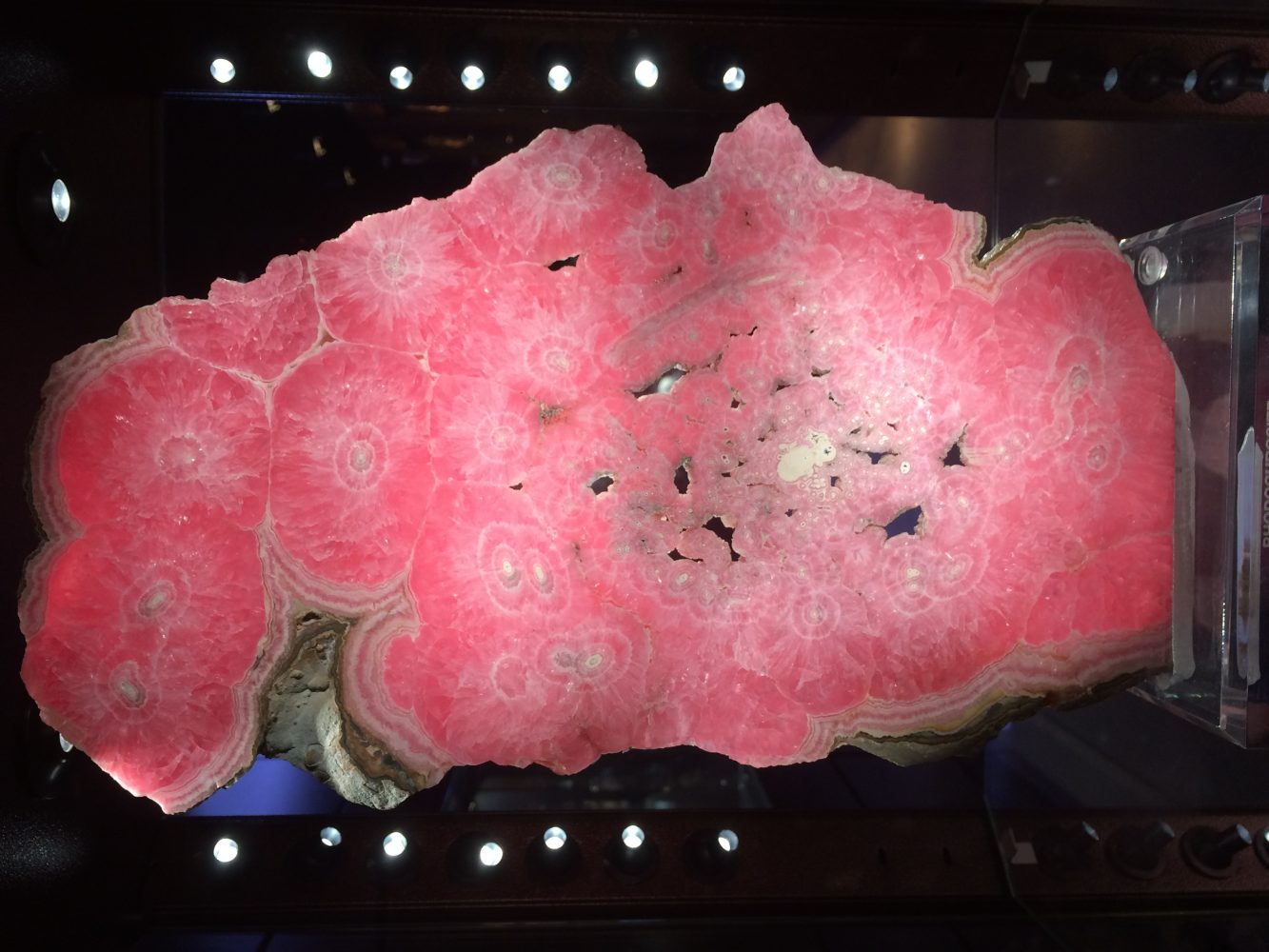Through my time working for the Dice Mineralogical Museum, the question visitors most frequently ask of me is to identify my favorite mineral. For such a seemingly straightforward inquiry, I find myself having a harder and harder time answering this every year. There are over 5,000 minerals properly identified on Earth, and, personally, choosing one is like choosing between children, so I seem to change my response every other week. However, the piece in our museum I find myself identifying as my favorite more often than not (at least this month) is a large cross-section of a rhodochrosite stalactite from Argentina, currently displayed prominently in our frontmost case.
Rhodochrosite is a unique mineral, in that it can achieve an amazing color unlike any other. It ranges from a light pink to a deep ruby-red, and can be mystifyingly transparent. Rhodochrosite forms in many spectacular habits, such as stalactitic, as radiating crystals and perhaps most famously as sharp rhombohedrons. Argentina is famous for its spectacular stalactitic rhodochrosite occurrences, and when cut through the center, the intricate growth pattern is displayed in beautiful pink circles.
Rhodochrosite, as well as many other minerals, owes its pink color to the element manganese (Mn). Rhodochrosite is manganese carbonate, which is similar structurally to the very common rock-forming mineral calcite. There is a mineral species that is a cross between rhodochrosite and calcite, called manganoan calcite, which has the formula (Ca,Mn)CO3. Manganese is also responsible for fluorescence in many minerals under ultraviolet light. The black manganese oxide mineral pyrolusite is often found associated with rhodochrosite, which contrasts nicely with the deep pink.
Come see our incredible rhodochrosite pieces for yourself at the Dice Museum, located on the first floor of North Hall, and open Wednesdays, Thursdays and Fridays from 12:30 to 4 p.m.!








